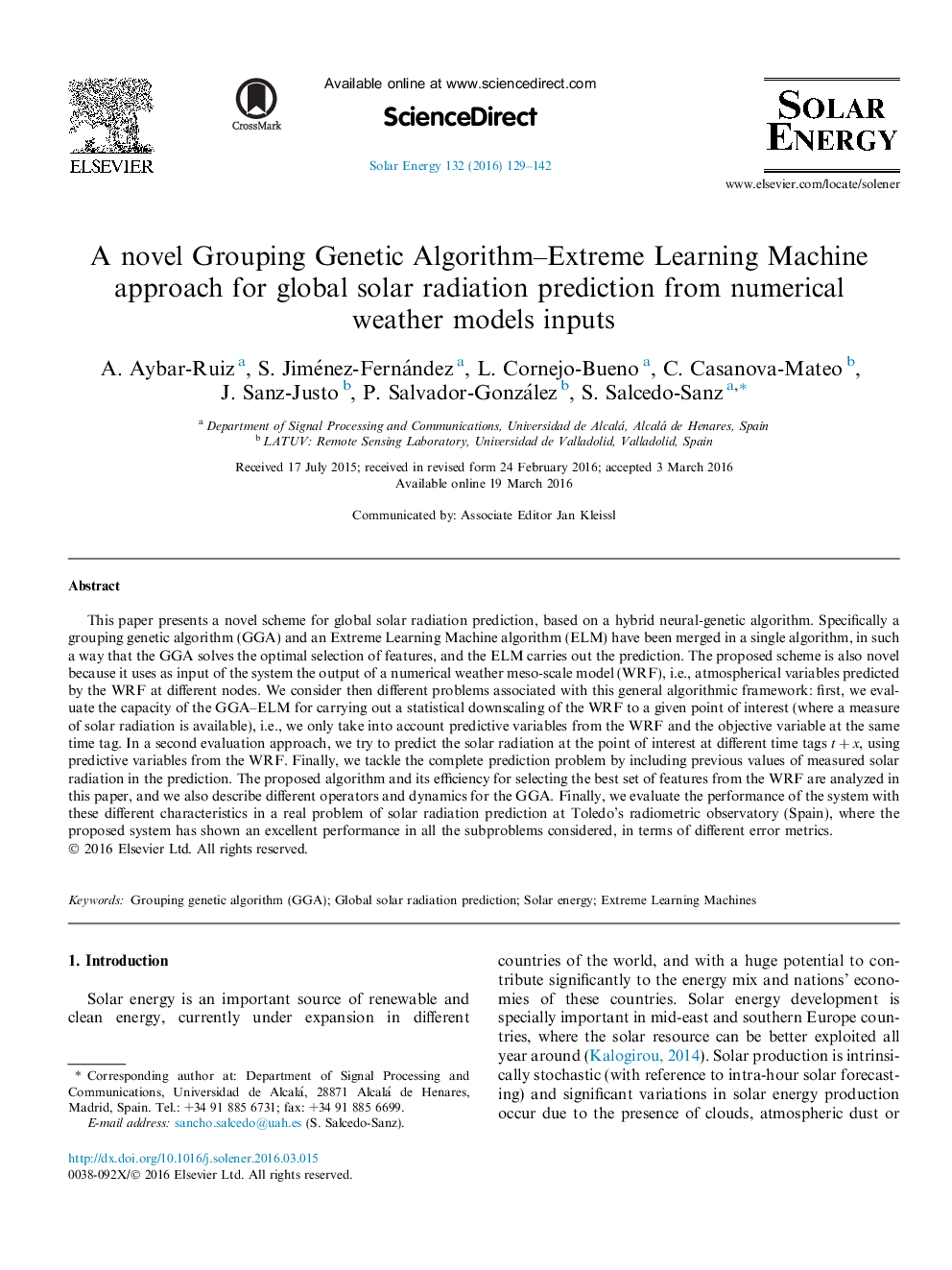| کد مقاله | کد نشریه | سال انتشار | مقاله انگلیسی | نسخه تمام متن |
|---|---|---|---|---|
| 1549390 | 1513086 | 2016 | 14 صفحه PDF | دانلود رایگان |
• This paper presents a hybrid GGA–ELM algorithm for solar radiation prediction.
• The GGA performs a feature selection, whereas the ELM produces an accurate radiation prediction.
• Predictive variables obtained from a numerical weather meso-scale model are considered.
• The proposed hybrid approach has shown excellent results for real data in Toledo, Spain.
This paper presents a novel scheme for global solar radiation prediction, based on a hybrid neural-genetic algorithm. Specifically a grouping genetic algorithm (GGA) and an Extreme Learning Machine algorithm (ELM) have been merged in a single algorithm, in such a way that the GGA solves the optimal selection of features, and the ELM carries out the prediction. The proposed scheme is also novel because it uses as input of the system the output of a numerical weather meso-scale model (WRF), i.e., atmospherical variables predicted by the WRF at different nodes. We consider then different problems associated with this general algorithmic framework: first, we evaluate the capacity of the GGA–ELM for carrying out a statistical downscaling of the WRF to a given point of interest (where a measure of solar radiation is available), i.e., we only take into account predictive variables from the WRF and the objective variable at the same time tag. In a second evaluation approach, we try to predict the solar radiation at the point of interest at different time tags t+xt+x, using predictive variables from the WRF. Finally, we tackle the complete prediction problem by including previous values of measured solar radiation in the prediction. The proposed algorithm and its efficiency for selecting the best set of features from the WRF are analyzed in this paper, and we also describe different operators and dynamics for the GGA. Finally, we evaluate the performance of the system with these different characteristics in a real problem of solar radiation prediction at Toledo’s radiometric observatory (Spain), where the proposed system has shown an excellent performance in all the subproblems considered, in terms of different error metrics.
Journal: Solar Energy - Volume 132, July 2016, Pages 129–142
